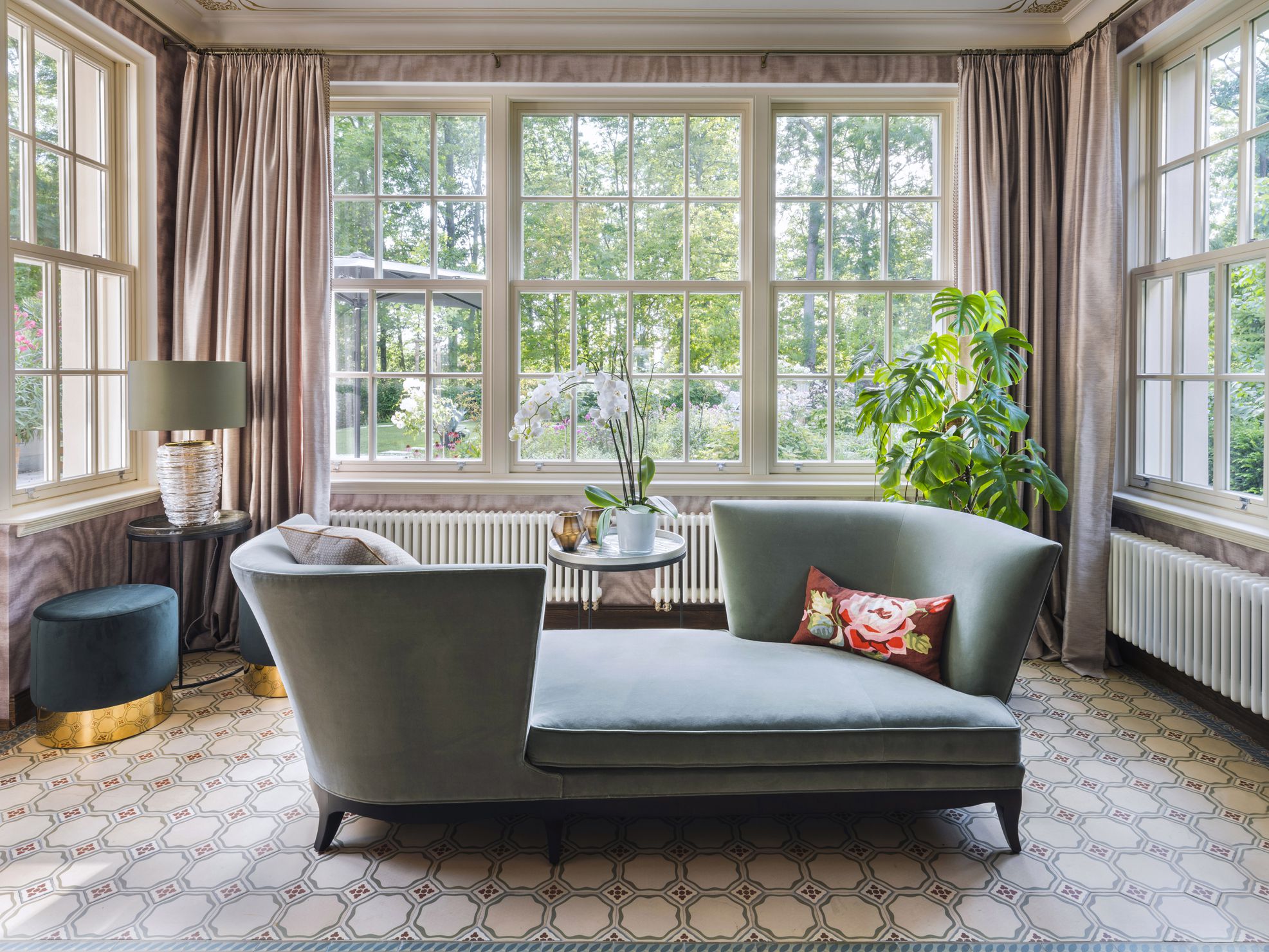Window treatments are one of the first design decisions you make when moving to a new house. Drapes, though a traditional method, are by far still the most favored, and their easy availability at stores makes it rather easy to shop for them. They are decor elements that enrich a space with color, softness and grace besides performing their main functions of providing privacy and light control. But in a hurry to shop, it’s easy to make mistakes and overlook details that are critical to get the best out of your curtains. Since wisdom is all about learning from mistakes, we thought we should list the top mistakes to avoid when buying custom curtains and suggest solutions for the benefit of all. So, without rigmarole, let’s begin.
1) Wrong judgment of width
The elegance of drapery is in its fullness, fall and gather. The worst that can happen to a drape is that it ends up being a flat fabric covering with no pleats.
When ordering drapes for non-pinched styles such as grommet tops, rod pockets, tab tops, flat panel tops etc., never order drapes that are the same width as your pole as they will simply hang like a flat sheet when closed, with no fabric to form into pleats. Instead, double the length of the pole. So if your pole is 50 inches, order a pair of 50 inch panels each, never 25 inch panels each. This will ensure rich gather, fullness and pleats. If you happen to be shopping for pinch pleated custom drapes, ask the seller what fullness their drapery is stitched to and never settle for more than 2x fullness.
2) Specifying wrong length
Nothing kills a set of beautiful drapery as one that’s hung at an awkward length – either too short or too long. For your drapes to look right, choosing the correct length is absolutely essential.
You can get your drapes to stand at sill-length or to graze or puddle on the floor. Although ceiling to floor is the ideal look for drapes, they do not suit all circumstances. So decide the length based on the function and decor style of the room.
It’s critical to measure the length precisely so the drapes do not fall short. Unless you’re going for sill length drapes, ideally your drapes should not hang more than an inch off the floor. Nor should they be unintentionally long as they will collect dust and wear at bottom.
If you want the drapes to touch the floor, ensure that your floor is even. Otherwise, it will come through as the uneven finish of the drape.
Puddling drapes are typically only recommended for aesthetic purposes, and best avoided in frequent-use areas. They are also not recommended if you have pets and tiny toddlers who might get tangled.

3) Wrong hardware placement and size
If the drape is hung from the height of the window very close to the frame, it will look unseemly and also allow for light to leak through from top. Mount the drapery pole at least 6 inches above the window frame. If your window is just a few inches short of touching the ceiling, consider mounting your hardware directly on the ceiling or on the wall as close to the ceiling as possible. This helps create an illusion of extra height and also prevents light from leaking from the top.
Another common mistake is regarding the length of the pole/track. If the pole is exactly the same length as your window, the drapery will cover a part of your window when stacked to the sides, thereby hampering light inflow and making the windows look smaller than they are. To avoid this, extend the pole a few inches beyond the frame on each side. The extra pole width allows the fabric to gather against the wall without blocking the window, which in turn makes a window feel grander and allows more light to stream in.
4) Wrong heading style
The heading style on top of a panel is what defines the aesthetic, gather and fall of the drapery. There are more than a dozen heading styles one can choose from – ranging from the ubiquitous and casual grommet tops to tailored and formal pinch pleats.
It’s important to choose the right heading style – one that fits the decor style and purpose of the room, while also being a practical choice for the intended level of usage. For example, pinch pleat drapes are better suited to formal rooms while grommets and flat panel tops reign supreme in laid back spaces. Drapery experts strongly recommend considering the level of usage as well. If you need to operate the windows regularly, ensure the drapery’s ease of movement on the pole by choosing a suitable heading style. For example, rod pockets and back tabs are more difficult to move than most other heading styles.
So before you shop, research various heading style options available – their pros and limitations – and pick one that best suits the decor style, size of window, purpose of the room and frequency of usage.
5) Wrong fabric
So much about a drape’s charm and utility depends on the fabric that it just can’t be ignored. Plush fabrics like silks and velvets – for example – provide a rich, opulent fall. But ensure that these delicate, formal fabrics fare well with your room’s design and purpose. The fabric must reflect the theme of the decor in its texture, color and pattern.
Similarly, be wary of selecting materials that need high maintenance in humid areas like the bathroom and kitchen. Never select sheers or semi-sheers for a bedroom or any room that needs a high level of privacy unless of course, you are layering them with non-sheer drapes. Likewise, avoid blackout curtains in rooms that need more natural light, like kitchens and bathrooms.
6) Leaving curtains unlined
Unless you’re opting for sheers, curtains without lining can look sparse and also have reduced longevity. Lining gives a plush gather and volume to the drapery. It also increases the lifespan of the drape and protects it from weathering with time, a natural consequence of over-exposure to sunlight. Blackout linings are highly advisable for rooms that need light blocking and darkening during the day. They help to retain the heat within the room in winters and block out excess heat from seeping in during summers.
7) Hanging the drapes straight from the box
Although this tip is not related to purchase, it is a step often ignored by customers who are in a hurry to hang the drapes. But if drapes go straight from the box to the pole, they will miss the charm, at least in the initial months when the pleats take time to set. So, finish and train your drapes before you hang them.
Iron them gently to clear any wrinkles from packaging. Then hang them on the pole and fold them in at the pleats with your hands as you gather them. Tie them up loosely at three or four positions and keep them so for at least two weeks. Or steam iron them while they are tied up to finish the pleat-setting process in 2-3 days. This will ensure that your drapes don’t flare at bottom, and fall in uniform, straight pleats much faster than they would without training.
All done, now shop wise
We hope these tips have given you a good idea about the right way of hanging drapes. Remember that drapes can make or break the look of your room. You can’t really afford to make any one of these mistakes if you’re serious about decorating your home in the most pleasant and practical way. So, do take heed and shop wise.





